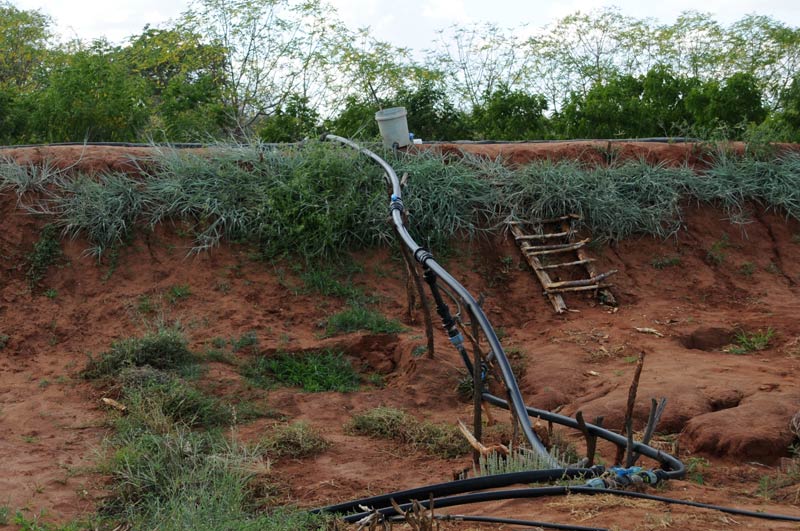 As erratic rainfall takes its toll on crops, smallholder farmers are joining hands to embrace irrigation with a group in Kilifi contributing about Sh350 each to buy irrigation equipment.
As erratic rainfall takes its toll on crops, smallholder farmers are joining hands to embrace irrigation with a group in Kilifi contributing about Sh350 each to buy irrigation equipment.
“We realized by pulling our resources together, our members would be able to afford irrigation tools which they can’t on their own. Now when we get good produce, our members use their extra income to boost their farm inputs,” Jotham Keya, the coordinator of the organization said. The group that comprise of over 1,000 small-scale farmers purchase irrigation equipment like pedal pumps, watering cans and water pipes.
Vitalis Penda a member of the group said that the switch from relying on rain to water his crops to irrigating his field has already paid dividends. In just two years, he has managed to turn two hectares of unpromising, parched land into a thriving farm of vegetables and beans. “I used to get nothing from this farm when I used to wait for the rain. Now when you look at it, you see the vegetables and the beans are very green and healthy because I irrigate it. Before, I used to get at most four bags of beans. Last season, after irrigation, I got 12 bags,” Penda, said.
“People don’t feed me anymore; I give them food,” he added. In central Kenya, farmers along seasonal rivers are using solar-powered water pumps as a cheap and environmentally friendly way to irrigate their farms. “The innovation by farmers is a clear demonstration [that] they want something that would get them out of perennial food insecurity. They want support to produce more,” James Samo, agricultural production specialist at the Ministry of Agriculture said.
Ninety percent of food consumed in Kenya is produced by smallholder farmers, the Ministry of Agriculture estimates.
The number of smallholders practicing irrigation has increased from 400,000 to an estimated 700,000 over the past two years, according to the Ministry of Agriculture.
The National Irrigation Board, which is responsible for large-scale government-run irrigation schemes, has recently added to its mandate the provision of technical advice to small-scale farmers. Farmers in Asia and Africa are increasingly taking up small-scale irrigation to increase yields, according to a recent study by the Sri Lanka-based International Water Management Institute.
“With food security back on the international agricultural agenda, and climate change increasing the uncertainty of rainfall, it is an opportune time to reconsider investments related to irrigated agriculture,” the report says. Yet Kenya’s Ministry of Agriculture says just 1.7 percent of the country’s arable land is irrigated, while the UN Food and Agriculture Organization estimates it has 300,000 hectares with irrigation potential.
Experts said that more must be done if small-scale irrigation initiatives are to make a difference. “For small-scale irrigation to pick up to levels where it can create impact, farmers must be trained on how to do it and be able to access the equipment at affordable prices,” James Samo ,an agricultural production analyst with the government, said.
Experts say the viability and sustainability of irrigation projects, big or small, will depend on the capacity of farmers to use water resources sustainably.
“As irrigation schemes pick up, water, which is a critical component in all this, needs to be used in a sustainable way. Farmers need training on how to conserve water through innovation, like the use of polythene-covered water holes,” Enoch Mwani, agricultural economist at the University of Nairobi, said.
For Rodney Lunduka, sustainable markets specialist at International Institute for Environment and Development, irrigation projects must be implemented prudently.
“Irrigation is not viable for the whole country. In other areas like the dry land, irrigation has lower potential, and other forms of production are more viable and sustainable, e.g., livestock production,” he said.
“Imposing irrigation in such arid areas only brings conflict, which result in even huger loses of property and life.”
















Comments powered by CComment